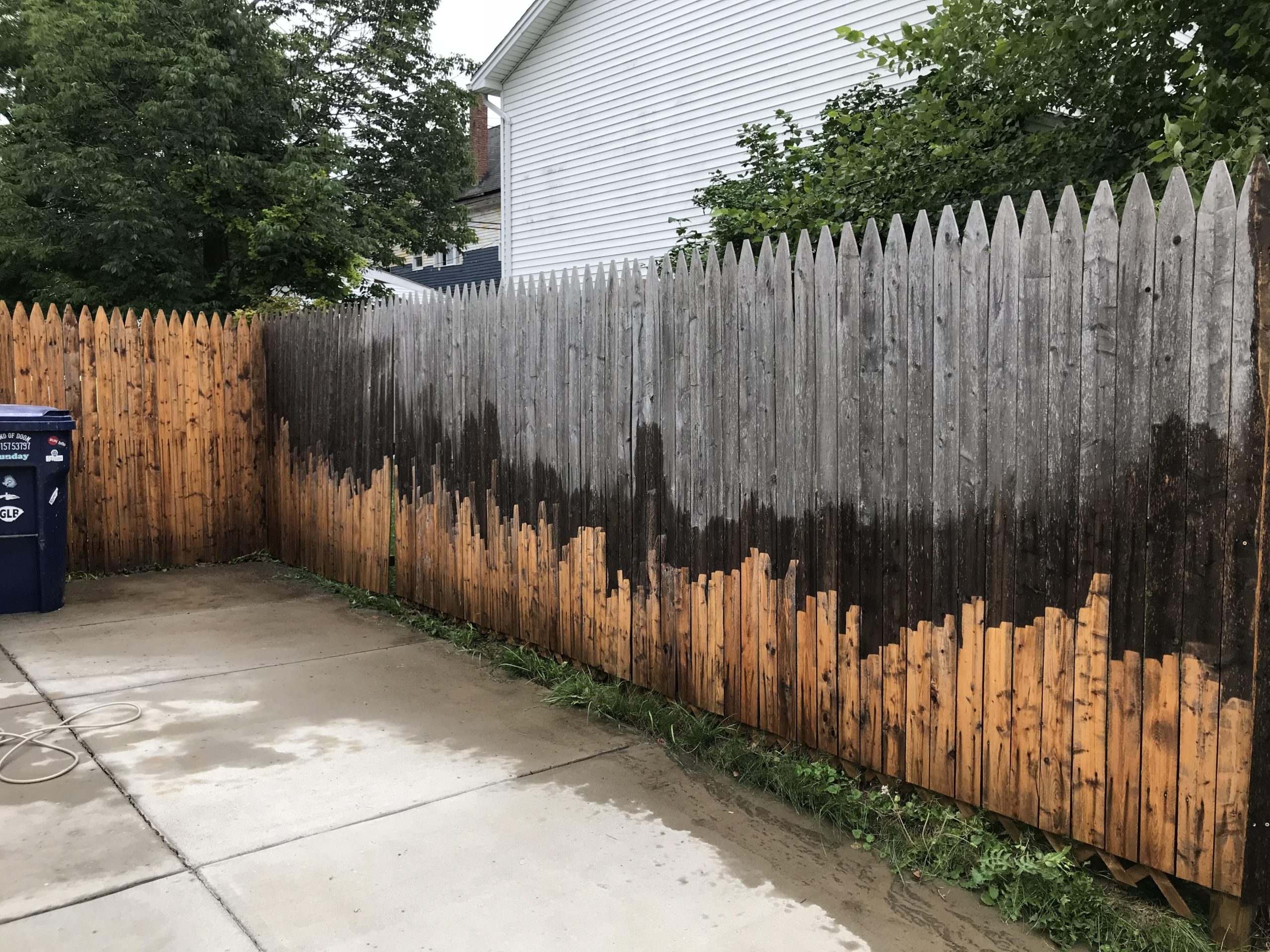
Pressure washing can make wooden decks, fences, and siding look brand new again — but if you’re dealing with aged or weathered wood, it’s natural to wonder:
“Could power washing actually cause it to rot faster?”
The short answer? Yes, it can — if done incorrectly.
Let’s break down why that happens, how to prevent it, and what you should do instead to safely clean older wood surfaces.
🪚 Understanding Wood Rot and Water Exposure
Wood rot is caused by fungus that thrives in moist, oxygen-rich environments. When wood retains water over time, the fibers begin to break down, leading to:
- Soft or spongy areas
- Mold and mildew growth
- Discoloration and eventual structural failure
Older wood, especially untreated or poorly sealed lumber, is much more porous and absorbent than newer, pressure-treated wood. That’s why it’s more vulnerable to damage from pressure washing. 🌧️🧫
🚨 How Pressure Washing Can Accelerate Rot
When done improperly, pressure washing older wood can:
- Force water deep into the fibers, saturating areas that don’t dry quickly
- Remove protective coatings like stains, sealants, or paint
- Roughen or splinter the surface, creating crevices that trap moisture
- Weaken structural integrity, especially if the pressure is too high
So while it may look clean right after a wash, improperly pressure-washed wood may retain hidden moisture — and that’s where the rot begins. 😬
❌ Mistakes That Speed Up Rot
Avoid these common power washing mistakes if you’re working with aged wood:
- Using a high PSI (above 1500 for wood is risky)
- Spraying too close to the surface
- Using a zero or narrow-degree nozzle (0° or 15°)
- Not allowing enough drying time after washing
- Failing to reseal the wood after cleaning
Browse Amazon Here For Popular Pressure Washers And Accessories
✅ Best Practices to Avoid Wood Rot When Pressure Washing
Here’s how to protect your older wood surfaces:
1. Use the Right PSI and Nozzle
- Keep pressure around 500–1200 PSI
- Use a 25° or 40° spray tip for a gentler touch
- Hold the nozzle 12–18 inches away from the surface
🧠 Rule of thumb: If the water cuts into the wood grain, your pressure is too high.
2. Spray with the Grain 🌾
Always move the wand in the direction of the wood grain. This helps prevent roughening and water intrusion.
3. Limit Wash Time ⏱️
Don’t linger in one spot too long. Work in sections and use a steady, even pace.
4. Allow Ample Drying Time ☀️
Let the wood dry for at least 48–72 hours before walking on it, sealing, or using it again. Avoid washing right before rain is expected.
5. Re-Seal or Re-Stain After Cleaning 🛡️
Once dry, apply a water-repellent sealant or stain to lock out future moisture and extend the life of the wood.
🧴 Should I Use Soap or Just Water?
Using a wood-safe detergent can reduce the need for higher pressure. Look for:
- Biodegradable wood cleaners
- Products labeled for decks or fences
- Avoid bleach or ammonia-based cleaners, which can dry and damage wood
Pre-soaking the surface with cleaner, letting it dwell for 5–10 minutes, and then rinsing can reduce the pressure needed to get great results. 🧽🌿
Browse Amazon Here For Wood-Safe Pressure Washing Cleaners
🛠️ When to Avoid Pressure Washing Altogether
If your wood is extremely old, brittle, or already showing signs of rot, skip the pressure washer entirely. Instead:
- Use a soft scrub brush and bucket
- Try a low-pressure garden sprayer with cleaner
- Gently rinse with a hose and wide spray nozzle
Sometimes, manual cleaning is safer for delicate wood.
🏁 Final Thoughts
Pressure washing can bring new life to tired wood — or send it down the path to rot if mishandled. The key is using low pressure, the right nozzle, and sealing the surface afterward to protect it.
If you treat your wood gently, it’ll reward you with many more seasons of beauty and strength. 🪵🌞💧
Browse Amazon Here For Popular Pressure Washers And Accessories






